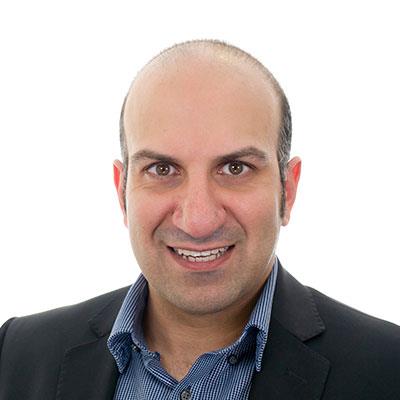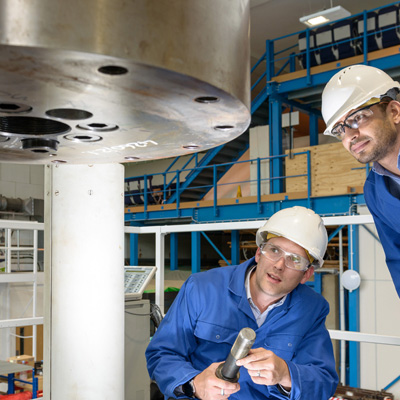Overview
- Start dateOctober and March
- Duration3 years part-time
- DeliveryTaught modules 60% and Individual Research Project 40%
- QualificationMSc
- Study typePart-time
- CampusDependent on delivery mode
Programme details
The programme has been mapped against the Level 7 Power and Propulsion Gas Turbine Engineer apprenticeship standard and has been developed for companies who want a full offering that delivers against all aspects of the Standard.
Find out more on studying our Power and Propulsion Gas Turbine Engineer Mastership®.
Why choose Cranfield University as your apprenticeship provider
One of the most powerful ways you can generate value from your Apprenticeship Levy is to upskill your existing workforce.
At Cranfield, we’re passionate about providing education tailored for industry. As one of the first universities in the UK to offer apprenticeships at master’s level, we understand what is needed to develop industry-led apprenticeship standards and have the expertise to deliver that training.
Cranfield's apprenticeship will provide a widening portfolio of master’s level apprenticeship training required by industry.
Qualifications underpinning the standard
Our Power and Propulsion Gas Turbine Engineer Apprenticeship is underpinned by our Thermal Power MSc.
Who is it for?
Who is it for?
This programme is intended for the following range of professionals:
Power/Energy sector
Staff from gas turbine users (e.g. utility or power production companies and oil and gas applications), engine manufacturers, service companies, government or regulatory authorities and consultancies
Aviation/Defence sector
Staff from airlines, air force, airports, engine manufacturers, airframe manufacturers, service companies, government establishments and consultancies
Licensed engineers in the aviation industry
Engineering staff in regulatory bodies with responsibility for environmental impact
The course has been developed in collaboration with a range of industry partners (Power sector: Score Energy, Siemens Industrial Turbomachinery Ltd, Uniper, WSP, R-MC Power Recovery Ltd, Flakt Group and Bladon Jet; Propulsion: Easy Jet, Royal Air Force and Defence Science and Technology Laboratory) and the Institute of Apprenticeships.
Benefits to your learners
Your early career professionals or professionals will greatly benefit from a postgraduate qualification and personal development opportunity with one of the UK’s top postgraduate universities, specialising in gas turbines. The applied nature of the programme enables personalised, specific and organisationally aligned development.
This course prepares employees for a higher level of responsibility in areas of gas turbines that requires the application of specialised knowledge and skills to address the design, development, operations and maintenance of these systems. The training will benefit candidates in tackling current pressing challenges that are often conflicting requirements of operational/technical constraints (engine reliability, efficiency and emissions) alongside the economic viability of operations.
This course aims to enable your employees to take on additional responsibility and/or transition to other areas within your company, within the sector and between the different sectors.
Benefits to your company
Cranfield University has been running gas turbine programmes for over 70 years and staffed by some of the most experienced professionals in the field. The capabilities within the Propulsion Engineering Centre that run these programmes, includes a comprehensive portfolio of analytical research, large-scale laboratories and educational programs, covering gas turbine technology: turbomachinery and icing research, combustion, engine performance and diagnostics.
Our Master’s programmes in gas turbines cover major engine components as stand-alone modules taught by different experts, while also offering whole engine and application modules that bring together the integration (engine), its performance, operations and maintenance. In completing this course, and achieving the associated award, a diligent apprentice will have the skills to:
- Assess and evaluate the design, performance, operation and/or maintenance requirements of gas turbine engines, using analytical and/or experimental tools as appropriate.
- Produce and evaluate the design and assess the performance of engine component/s for gas turbines for different applications and, where appropriate, their environmental impact.
- Adapt and deploy advanced knowledge and methods to design and analyse gas turbines within the requirement of their applications on air, land or sea.
- Plan and deliver substantial technical work demonstrating the application of problem-solving, technical and/or communication skills to solve relevant problems, using appropriate methods and taking account of costs, ethics, management, environmental impact and/or social effects of engineering.
- Examine the requirement for ethical and professional conduct when using and presenting data.
Course details
Our apprenticeship is delivered through a mix of blended learning and block delivery primarily at our Cranfield campus in Bedfordshire. The duration of the apprenticeship is approximately 3.5 years (3-6 months following successful completion of the MSc). This includes 9 taught modules, an Individual Project and, an End Point Assessment.
Assessment one: Work-based Project comprising of project report (10,000 words) presentation and questioning (20 minutes presentation and 40 minutes questioning).
Assessment two: Professional Discussion (60 minutes) supported by a portfolio of evidence.
These assessments will assess the apprentice’s ability to apply practical, conceptual, or technological knowledge and understanding of the whole engine and applications (method one) and components (method two), to address conflicting operational or technical requirements, using appropriate methodologies/approaches.
Course delivery
Taught modules 60% and Individual Research Project 40%
Individual project
A key element of the programme is the project work undertaken which is industrially driven with students selecting a project with the agreement of their employer which allows for the opportunity to demonstrate independent research ability, the ability to think and work originally, contribute to knowledge and overcome genuine problems in gas turbine power or propulsion.
Modules
Keeping our courses up-to-date and current requires constant innovation and change. The modules we offer reflect the needs of business and industry and the research interests of our staff and, as a result, may change or be withdrawn due to research developments, legislation changes or for a variety of other reasons. Changes may also be designed to improve the student learning experience or to respond to feedback from students, external examiners, accreditation bodies and industrial advisory panels.
To give you a taster, we have listed the compulsory and elective (where applicable) modules which are currently affiliated with this course. All modules are indicative only, and may be subject to change for your year of entry.
Course modules
Compulsory modules
All the modules in the following list need to be taken as part of this course.
Gas Turbine Performance, Simulation and Diagnostics
| Aim |
To inform you of the different types of gas turbine engines; their applications, on-design, off-design and transient performance. To provide you with the ability to undertake gas turbine component performance calculations, diagnostics and to perform evaluations of gas turbine performance, and deterioration. |
|---|---|
| Syllabus |
Gas Turbine Types and Applications Effect of design parameters such as pressure ratio and turbine temperature on the basic gas turbine cycle. Modifications of the basic Brayton cycle, compounding, intercooling, reheating, heat exchange, bypass, and fan cycles. Simulation of the above. Performance and Simulation Design point performance of turbojet, turbofan and turboshaft cycles, effect of bypass ratio. Off design performance, effect of ambient temperature, altitude, throttle setting and flight speed. Non-dimensional representation. Gas turbine simulation. Effects of bleeds and power offtakes. Compressor turbine matching. Gas turbine degradation. Simulation and diagnostics of the above. Component maps. Surge alleviation, performance improvements, steady-state, and transient performance. Off-design performance calculations and iteration techniques Accelerations, decelerations, effects on surge margin. Transients of single shaft and multi-shaft engines. Transient performance simulation. Effects of heat transfer on transient performance. Software used for gas turbine performance simulation: TURBOMATCH Diagnostics and Monitoring. Description of gas turbine performance degradation and faults. Description of most used gas turbine condition monitoring techniques. Software used for diagnostics: PYTHIA |
| Intended learning outcomes |
On successful completion of this module you should be able to:
|
Turbomachinery and Blade Cooling
| Aim |
To familiarise you with compressor and turbine aerodynamic design and performance by instruction, investigation and example. To introduce you to the technology of gas turbine blade cooling through analytical and practical approaches of heat transfer principles, convection cooling, impingement film transpiration cooling and liquid cooling. |
|---|---|
| Syllabus |
Thermofluids: Introduction to aerodynamics, thermofluids, and compressible flows. Compressor Design and Performance Overall performance: Fundamentals of axial flow compressors. Overall performance, achievable pressure ratio and efficiency. The effect of Reynolds number, Mach number, and incidence. Definition of isentropic and polytropic efficiency, effect of pressure ratio, performance at constant speed, surge and surge margin definitions, running line, choking effects. The axial compressor stage: Stage loading and flow parameters, limitation in design on pitch line basis. Definition and choice of reaction at design, effect on stage efficiency. Loss sources in turbomachines and loss estimation methods. The ideal and real stage characteristic, stall and choke. The free vortex solution, limitations due to hub/tip ratio. Off-design performance Choice of overall annulus geometry, axial spacing, aspect ratio, limitations of rear hub/tip ratio. Compressor blading: selection of blade numbers, aspect ratio and basic blade profiling. Compressor design example: Multi-stage compressor design example carried out for a HPC. Turbine Design and Performance Overall performance: the expansion process and characteristics, annulus layout and design choices, choice of stage loading and flow coefficient, engine overall performance requirements, overall annulus geometry and layout; rising line, constant mean diameter and falling line. The axial turbine stage: Aerodynamic concepts and parameters, velocity triangles, reaction, stage loading, flow coefficients. The ideal and real characteristic. Design for maximum power: effect of choking and change of inlet temperature and pressure. Stage efficiency, overtip leakage, profile losses, correlations. Three-dimensional design aspects. Radial equilibrium and secondary flows. Turbine blading: choice of base profile, blade numbers and aspect ratio. Zweiffel's and alternative lift coefficients. Turbine Design Example: An aerodynamic design example is carried out for a HPT Heat Transfer Principles: Brief review of heat transfer principles and physical significance of non-dimensional groupings. Conditions around blades, boundary layers, external heat transfer coefficient distribution, effect of turbulence. Root cooled blades and NGVs, analytical and numerical methods of determining spanwise temperature distribution. Fibre strengthened and nickel base alloys. Need for high turbine entry temperature: effect on engine performance. Development of materials, manufacturing processes and cooling systems. Convection Cooling: Convectively cooled aerofoils: analytical approach for metal and cooling air spanwise temperature distribution. Cooling passage geometry and heat transfer characteristics. Cooling efficiency, cooling effectiveness and mass flow function: application at project design stage for determining metal and cooling air temperatures. Methods for optimising cooling system design: secondary surfaces and multipass. Internal temperature distribution of cooled aerofoils: calculations, comparisons with experimental results. Impingement, Film and Transpiration Cooling: Principles steady state and transient performance, characteristics, advantages, limitations, comparison with convection cooling. Cooling air feed and discharge systems. Integration of cooled turbine with aerodynamic performance and main engine design. Co-ordination of design responsibilities. Example of cooled turbine stage design. Liquid Cooling: Liquid cooling: principles, advantages and limitations, practical examples. |
| Intended learning outcomes |
On successful completion of this module you should be able to:
|
Combustors
| Aim |
|
|---|---|
| Syllabus |
Introduction to GT combustor design considerations and sizing methodologies: Diffusion and pre-mixed flame characteristics; GT combustor design features and performance requirements; Design considerations and main functions of the primary, intermediate and dilution zones; Fundamental aspects of the ignition process; Sources of pressure loss; Performance criteria and requirements for pre-combustor diffusers; Faired and dump diffusers; Combustor sizing methodologies based on the pressure loss approach, combustor efficiency requirements and altitude relight requirements. Combustion efficiency: Definition of combustion efficiency and combustion efficiency requirements; Evaporation rate controlled systems – influence of fuel type, turbulence and pressure, drop size and residence time; Mixing rate controlled systems; Reaction rate controlled systems – derivation and significance of the theta parameter. Overview of GT generated pollutants: Products of combustion and their consequences; Mechanisms of formation of GT pollutants; Effects on the environment and/or human health; Overview of limitation strategies and associated challenges; Low emissions combustion systems for aero and stationary gas turbines; Emissions legislation and targets. GT combustor heat transfer and cooling: Combustor buckling and cracking; Need for efficient methods of liner cooling; Heat transfer processes (Internal and external radiation, internal and external convection, conduction); Calculation of uncooled liner temperature; Effect of chamber variables on heat transfer terms, liner wall temperature and liner life; Film cooling techniques; Advanced wall cooling techniques; Combustor liner materials and thermal barrier coatings. GT fuels Appraise types and properties of fuels; Methodologies to calculate combustion temperatures for various fuel types, mixture strengths and pressures (both non-dissociated and dissociated). Computational methods for GT Combustors Role of CFD in combustor design and development; Application of CFD for preliminary design, prognostics and diagnostics of combustion systems. Introduction to GT afterburners: Requirement and principle of afterburning; Effects of afterburning on engine performance; General arrangement, main components and design features of afterburners; Ignition methods for GT afterburners; Control requirements and methods for engines with afterburners; Considerations for selection of convergent and convergent-divergent nozzles. |
| Intended learning outcomes |
On successful competition of this module you should be able to:
|
Mechanical Design of Turbomachinery
| Aim |
To familiarise you with the common problems associated with the mechanical design and the lifting of the major rotating components of the gas turbine engine. |
|---|---|
| Syllabus |
Failure criteria: Monotonic failure criteria: proof, ultimate strength of materials. Theories of failure applied to bi-axial loads. Other failure mechanisms associated with gas turbine engines including creep and fatigue. Fatigue properties including SN and RM diagrams, the effect of stress concentration, mean stress etc. Cumulative fatigue, the double Goodman diagram technique to calculate the fatigue safety factor of gas turbine components. Methods of calculating the creep life of a component using the Larson-Miller Time-Temperature parameter. Applications: The design of discs and blades. Illustration of the magnitude of stresses in conventional axial flow blades by means of a simple desk-top method to include the effects of leaning the blade. The stressing of axial flow discs by means of a discretised hand calculation which illustrates the distribution and relative magnitude of the working stresses within a disc. The design of flanges and bolted structures. Leakage through a flanged joint and failure from fatigue. Blade vibration: Resonances. Desk top techniques for calculating the low order natural frequencies of turbomachine blades. Allowances for the effects of blade twist and centrifugal stiffening. Sources of blade excitation including stationary flow disturbance, rotating stall and flutter. Derivation of the Campbell diagram from which troublesome resonances may be identified. Allowances for temperature, pre-twist and centrifugal stiffening. Methods for dealing with resonances. Damage Mechanisms and Lifing: Fundamentals of Creep and Fatigue damage mechanisms. Material, design and operational parameters that affect creep and fatigue. Experimental and test procedures to characterise creep and fatigue damage. Classification of Fatigue-Low Cycle and High Cycle and use of appropriate methods: Strain Vs Stress Methods. Cumulative damage assessment using cycling counting and linear damage rules -Milner Approach. |
| Intended learning outcomes |
On successful completion of this module you should be able to:
|
Fatigue and Fracture
| Module Leader |
|
|---|---|
| Aim |
|
| Syllabus |
It is not intended to dwell on the metallurgic nature of fatigue but instead to introduce students to calculating techniques, some of them quite simple, with which they may be able to determine the probable life of a machine. Fatigue and fracture are simply two sides of the same coin since they both give us insight into the nature of cyclic fracture, and both allow the determination of the cyclic life of a component under certain operating conditions. Fatigue is essentially empirical in nature that is, based on experience going back to the age when wheels first fell off rolling stock. Fracture is much more analytical in nature, and based upon an analytical model of the small flaw (imperfection) which all failed components can be assumed to have held. The course is liberally sprinkled with worked examples. Emphasis is placed on the application of Fatigue and Fracture theory on aero and stationary gas turbines and their components including turbo-machinery shafts, blades and disks. Materials: Materials Selection Process, Gas Turbine Materials, Aluminium alloys, Titanium alloys, Nickel and Cobalt superalloys, Metal Matrix Composites, Ceramic Matrix Composites, Polymer Composites, Coatings Technology for gas turbines, Corrosion Resistant Coatings, Thermal Barrier Coatings, Future Gas Turbine Materials. |
| Intended learning outcomes |
On successful completion of this module a student should be able to: 1. Discuss and evaluate the key aspects, concepts and theories of fatigue failure within the context of gas turbine engines; 2. Adopt appropriate stress based methods to ensure the safe operation of gas turbine components subject to fatigue failure by estimating a fatigue factor of safety; 3. A nalyse complex component cyclic behaviour using the ‘rainflow’ cycle counting method and R-M/S-N diagrams to estimate component life; 4. Employ strain based methods to estimate the life of gas turbine components subject to low cycle fatigue; 5. Employ methodologies to assess the life and fatigue safety of components subject to ‘in-phase’ multi-axial fatigue; 6. Adopt the methods of linear elastic fracture mechanics to estimate the life to failure of a cracked component; 7. Analyse the results of lifing calculations to make engineering recommendations on the ‘in-service’ viability and safety of particular gas turbine components given a particular usage profile and environmental factors; 8. Discuss the major lifing philosophies with respect to airworthiness regulations applied to aero-gas turbine critical components; 9. Describe the criteria for the selection of materials for the major gas turbine components; 10. Describe the methods used to ensure that gas turbine components are resistant to environmental factors such as corrosion and thermal degradation; 11. Evaluate future/evolving gas turbine materials in terms of their properties and advantages over current materials. |
Gas Turbine Operations and Rotating Machines
| Aim |
|
|---|---|
| Syllabus |
Gas Turbine Operations: Steam Turbine Operations: Diesel Engines for Heat and Power: |
| Intended learning outcomes |
On successful completion of this module you should be able to:
|
Management for Technology
| Aim |
The importance of technology leadership in driving the technical aspects of an organisation’s products, innovation, programmes, operations and strategy is paramount, especially in today’s turbulent commercial environment with its unprecedented pace of technological development. Demand for ever more complex products and services has become the norm. The challenge for today’s manager is to deal with uncertainty, to allow technological innovation and change to flourish but also to remain within planned parameters of performance. Many organisations engaged with technological innovation struggle to find engineers with the right skills. Specifically, engineers have extensive subject/discipline knowledge but may benefit from developing a deeper understanding of management processes in an organisational context. |
|---|---|
| Syllabus |
• People management: Understanding you. Understanding other people. Working in teams. Dealing with conflicts. • The Business Environment: Understanding the business environment; identifying key trends and their implications for the organisation. • Strategy and Marketing: Developing effective strategies; Focusing on the customer; building competitive advantage; The role of strategic assets. • Finance: Profit and loss accounts. Balance sheets. Cash flow forecasting. Project appraisal. • New product development: Commercialising technology. Market drivers. Time to market. Focusing technology. Concerns. • Business game: Working in teams (companies), students will set up and run a technology company and make decisions on investment, R&D funding, operations, marketing and sales strategy. • Negotiation: Preparation for Negotiations. Negotiation process. Win-Win solutions. • Presentation skills: Understanding your audience. Focusing your message. Successful presentations. Getting your message across. |
| Intended learning outcomes |
On successful completion of this module you should be able to:
|
Jet Engine Control
| Aim |
This module aims to introduce you to aircraft engine control and to explain the philosophy of jet engine control requirements and systems to gas turbine engineers. |
|---|---|
| Syllabus |
The difficulty of compressing air; the overall compressor characteristic and its graphical presentation. Running line and surge line. Performance limitations at low rotational speed and low airflow. Design for surge alleviation. The use of variable inlet guide vanes, variable stators, air bleed, multi-spooling. Axial turbine performance Physics of expanding gas flows and choking. Performance at maximum flow. Effect of changes in inlet temperature and pressure. The turbine overall performance characteristic and turbine efficiency. Gas turbine control Needs and Implementation. The gas turbine is a very complex mechanism that has to operate within many constraints including aerodynamic, mechanical and handling issues. At the same time it also needs to be responsive and operate safely. An explanation will be given on these constraints and how different features such as variable stators, bleed valves and variable area nozzles can be used to implement safe and responsive engine handling. An explanation on component matching and the influence of each control feature on the operation of the engine. Introduction to fuel systems and fuel pumps To include the role of the fuel system; fuel properties; typical fuel flows, temperatures, and pressures in the system, descriptions of low pressure first stage pump, high pressure second stage pumps; typical modern control systems. Airframe Fuel Systems Low Pressure Engine Fuel Systems. To include typical LP system architecture, fuel pump inlet pressure requirements, the concept of Net Positive Suction Pressure (NPSP), establishing the low pressure pump design points; low pressure first stage pump types; fundamentals of LP pump design. High pressure engine fuel pumps Difference between positive displacement and rotodynamic pumps, types of positive displacement pumps; selecting the optimum drive speed; sizing a positive displacement pump; the effect of leakage on pump size and heat rejection; mechanical design considerations; journal bearing design; pointing design and minimising cavitation erosion damage. Hydro-mechanical fuel metering Brief history of fuel control architectures leading to FADEC systems; Functions required by modern FADEC based fuel controls; impact of reliability requirements on modern fuel control architecture; modern fuel control architecture; basic principles of fuel flow; fuel metering; electrical interface devices used on modern fuel controls; engine actuation; demonstration of modern fuel control hardware; fitness for purpose, future trends in fuel control. Electronic engine control To include circuit design, mechanical design, software. Staged Combustion To include aircraft emissions, emissions legislation, controlling emissions, fuel control requirements, fuel control, control laws. Fuel controls for ‘more/all’ electric engines To include impact of the More/All electric engine on fuel control, positive displacement pump based systems, centrifugal pump based systems, technical challenges. Airworthiness considerations European and USA regulatory requirements relevant to certification and substation of engine controls and fuel systems including their installation. Service history, occurrences and case studies. |
| Intended learning outcomes |
On successful completion of this module you should be able to:
|
Propulsion Systems Performance and Integration
| Aim |
|
|---|---|
| Syllabus |
Aircraft Engine and Component Performance Three main topics are dealt with in this section: Aircraft Performance, Jet Engine Performance, Intakes and Exhaust Systems. • Aircraft Performance: Deals with the major topics of flight and aerodynamics, such as lift, drag, range, performance and a section on the design of aircraft for different purposes. • Jet Engine Performance: Focuses mainly on the off-design performance of jet engines. Engine behaviour at different altitudes, flight speeds, ambient conditions and throttle settings are described. This topic features a presentation on the design of engines for various types of aircraft. • Intakes and Exhaust Systems: Outlines the major design features and operation of the components for subsonic and supersonic aircraft applications. System Performance and Integration: This portion of the course starts with the analysis of fundamental aerodynamics of unducted and ducted bodies. This is followed by the development, via the formal definitions of thrust and drag and the concept of stream-tube momentum force, of the relationship between the net propulsive force of the powerplant, engine thrust and nacelle forces. Alternative performance accounting relationships are developed for various choices of thrust interface using force, drag and the hybrid force/drag method. These are employed to illustrate the interplay between component forces. The treatment addresses the long and short-cowl podded nacelles, appropriate to civil engine installations, on- and off-wing; and the highly integrated installations encountered in military aircraft. |
| Intended learning outcomes |
On successful completion of this module you should be able to:
|
Computational Fluid Dynamics for Gas Turbines
| Aim |
To introduce you to computationally-based flow modelling, applicable to turbomachinery components and gas turbine engines. To introduce you to the theoretical background of Computational Fluid Dynamics and to the limitations of CFD when applied to the solution of turbomachinery fluid flow problems. To provide experience in the use of a commercial CFD code through planning and conducting investigations of complex turbomachinery flow cases. |
|---|---|
| Syllabus |
Introduction to computational fluid dynamics and the role of CFD in engine component evaluation and improved design. Review of current capabilities and future directions. Physical Modelling Governing Navier-Stokes equations. Approximate forms. Turbulence - turbulent averaging, mathematical closure and turbulence modelling. Scalar transport and chemical reaction. Reynolds averaging, Large Eddy Simulation, Direct Numerical Simulation. Finite Difference Equations Problem classification. Discretisation. Solution methods. Pressure correction. Boundary conditions. Mesh generation for practical flow geometries. Practical Demonstration Introduction to commercially available general purpose CFD codes (FLUENT and CFX). Case study tutorials and assessed assignment. |
| Intended learning outcomes |
On successful completion of this module a you should be able to:
|
Elective modules
One of the modules from the following list needs to be taken as part of this course.
Teaching team
You will be taught by industry-active research academics from Cranfield with an established track record in product-service and maintenance systems, and through-life capability management.
How to apply
To apply for this course please use the online application form.












